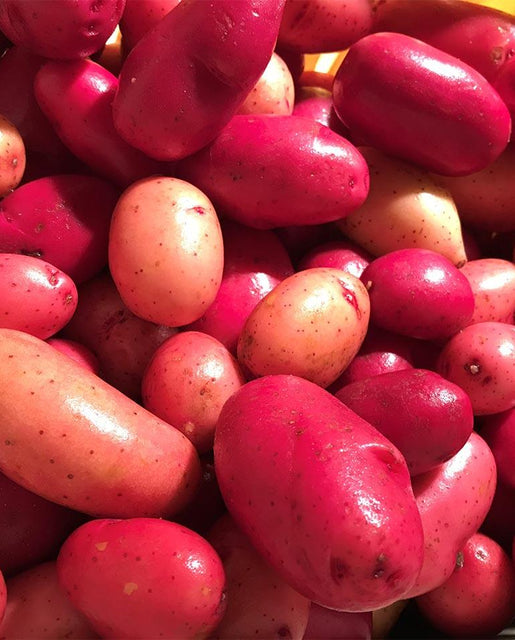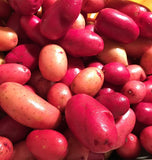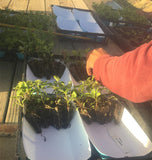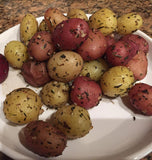Diseases & Pests
Late blight (
Phytopthera infestans) is problematic, especially on the Coast. Symptoms appear as water-soaked gray spots on tips and margins of leaves, leaf axils, and on stems. Even if nothing shows on the leaves, late blight makes black spots under the skin of the tuber. Left unchecked, it will destroy the plant. Copper spray is effective if applied regularly through the growing season, including drenching the soil. The most important step to avoiding disease is to establish a vigorous and healthy crop; this can be accomplished by using disease free seed, planting in rich soil, avoiding pre-emergence irrigation and watering carefully once the crop emerges.
The most common pests to bother your potatoes on the coast are wireworms (especially in gardens recently taken out of grass).
Wireworms are the larvae form of a very slender black beetle known as the Click Beetle because if you turn one over, when it goes to right itself, it makes a “Click!” sound. The beetle lays its eggs in grass, and the larvae eat in our gardens. They burrow into the roots, seeds, and underground stems of tomatoes, corn, potatoes, peppers, and squash. The damage is worse on land that has been recently been converted from lawn to garden. The larvae themselves are crisp, golden, up to 1cm long and can live for up to 7 years in the soil.
If your seeds don’t appear to sprout, or the plants wilt and die suddenly, your soil may have wireworms. An irregular pattern of plants dying in a field is typical of wireworm damage. To find out if you have wireworms before you start planting, create bait made of carrot and potato pieces. Bury the bait in 10cm of soil, and mark it with a stick. Dig it up in 3 or 4 days. If there are more than 1 or 2 wireworms per bait, you have a problem. They are difficult to control but regular cultivation of the top 10cm of the soil, as well as trapping them on pieces of potato, and crop rotation will slow the damage. Digging in an overwintered Cole crop can also be effective. Predatory nematodes work also.





















